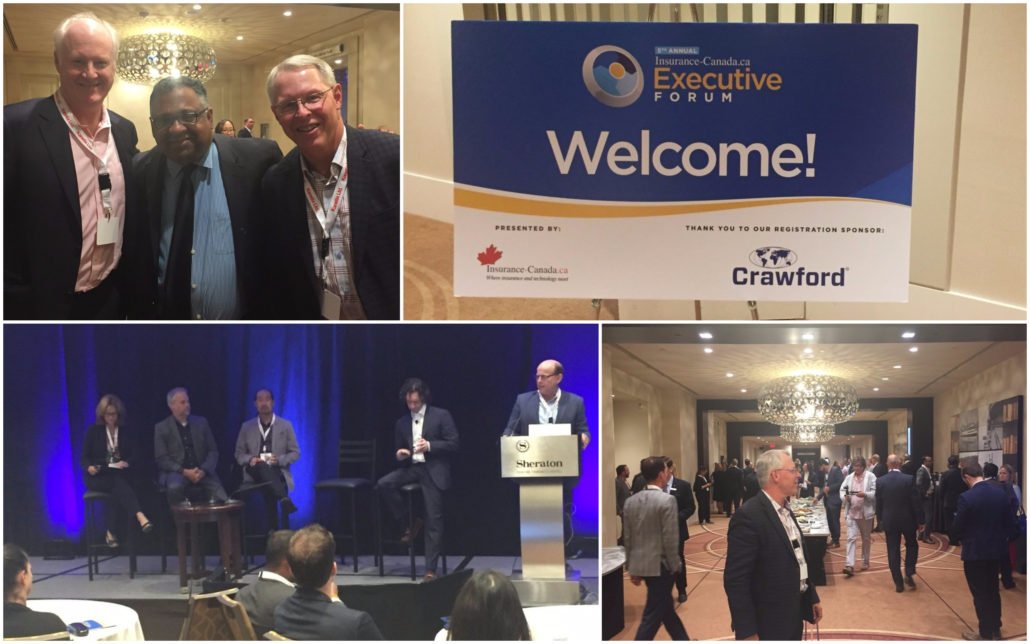Connected Insurance: The time is now
By David Barber, Vice President, Hubio Technology
Insurance is more relevant than ever.
Recent wildfires, floods and tornadoes, and the devastating losses they produce are a testament to that. Insurers covered over $32b in P&C claims in Canada in 2016, while US numbers were significantly larger, exceeding $378b in incurred losses of which $23b covered catastrophe claims.
While the need for insurance is more relevant than ever, many consumers do not feel the same way about the value of current insurers. In fact, many policyholders are unhappy with their current provider.
At the recent Insurance-Canada.ca Executive Forum, over 200 leading insurers, consultants from McKinsey, Celent, Novarica and Deloitte and tech providers including Hubio gathered to examine the topic of how insurtech could play a role in connecting insurers and customers, and improving the value of the relationship.
Several concepts resonated with me and represent strong advice for any insurer wanting success for the future.
The depth of connection is critical
Craig Weber, CEO of Celent spoke about connecting insurers and customers, and drew upon research from The Happiness Halo study from Lippincott. A quote from the study, “Appeal to customers’ reason and they’re yours for a day. Appeal to customers’ emotions and they’re yours for a lifetime”, summarized much of the key message, in which insurers not only need to connect with customers, but to connect in a much deeper, long-lasting manner. Many insurers focus on transactional excellence, which appeals to a customer’s reason, but unfortunately miss out on building relationships as they do not form emotionally connected partnerships.
This results in poor loyalty. Craig Weber highlighted data that showed insurer net promoter scores, when compared to that of a consumer’s favorite company, were a resounding 70 points lower.
Mukul Ahuja, Strategy and Innovation leader at Monitor Deloitte, built upon this theme. He indicated that insurers could look to the retail sector to find best-in-class leaders in customer service and customer connection, and emulate them. These retailers provide an innovative and seamless customer experience, whereas insurers fall short of customer expectations, and suffer a trust deficit relative to other businesses. Several quotes from insurance customers supported this problem:
“I am always scared that I am not properly covered.”
“I don’t get enough information from my insurance company, it would be great to get more help.”
This was supported by Forrester research on home and auto insurers in which 47% of brands’ customer experience ratings rose and then fell back, indicating insurers inability to create positive, and sustainable change.
Successful retailers were able to sustain positive goodwill. They provide information in multiple, connected channels and they have high degrees of trust. When choosing to purchase insurance, 32% of customers consider brand in addition to getting a good deal.
How does insurtech help with these problems?
Fitting a full day into several hundred words is difficult, so I will highlight just a few specifics on how insurers can begin the journey to better connect with customers.
Delivering information on-demand, accessible through multiple channels gives consumers choice, which is necessary. However, it is not sufficient, as unlimited choice and the decisions this necessitates are less desirable than some choice accompanied by parameters to guide. Therefore insurers need to combine some choice, along with direction and personalized constraints.
Focus on customer’s behaviors not demographic variables. The assumption that younger customers are more predisposed to use digital channels is not true. As many consumers aged 35-54 are willing to buy insurance online as those in younger segments, and almost as many will buy insurance via mobile devices.
A panel including David Crozier, President and CEO of Everest Insurance Company of Canada, and Lorie Phair, managing director of Canadian Broker network addressed this topic. Phair stated, “I think many of the younger people, who we assume are very comfortable buying online, in fact as it turns out, they are the ones who need the advisor,” By contrast, older people “who are a little more confident … may in fact be the ones that are more comfortable making a purchase online.”
One of the critical ways insurers can emotionally connect with their customers is to extend their brands outside insurance. Matteo Carbone, the founder and director of the Connected Insurance Observatory, spoke about this topic in his keynote address. He examined why some insurers were successful with telematics programs while others were failing.
One of the key factors for success was to use the data from in-car devices to extend product and service offerings beyond insurance. Brand extensions, in areas including road-side assistance, vehicle health, and Wi-Fi networks are working to help successful insurers connect with their customers, enhance loyalty and build trust.
Research carried out by Bain & Company confirms that a high percentage in North America would value these brand extensions.
As the path to purchase insurance becomes less and less linear, and channels expand, Hubio is working with insurers, leading and supporting efforts to strengthen customer loyalty and relationships.
Get in touch to find out how we can help you.
Sources:
Canada’s P&C insurance industry, all sectors, Insurance Bureau of Canada, 2017
Commentary on 2016 Year-End Results, Insurance Information Institute, 2017
The Happiness Halo, Lippincott, 2017
Celent presentation materials by Craig Weber, 2017
Monitor Deloitte presentation materials by Mukul Ahuja, 2017
Bain & Company, Customer Behavior and Loyalty in Insurance: Global Edition 2016



